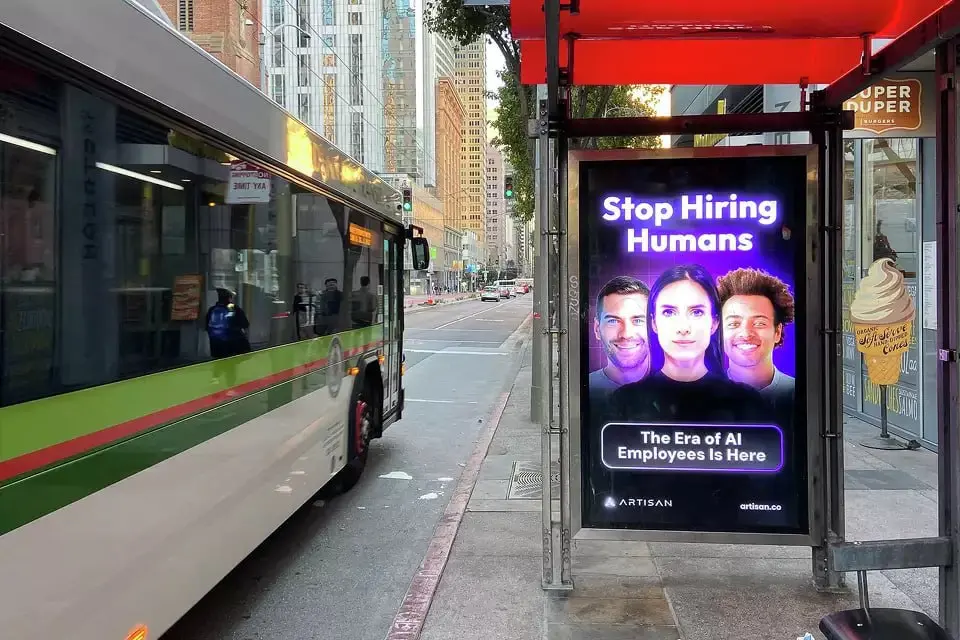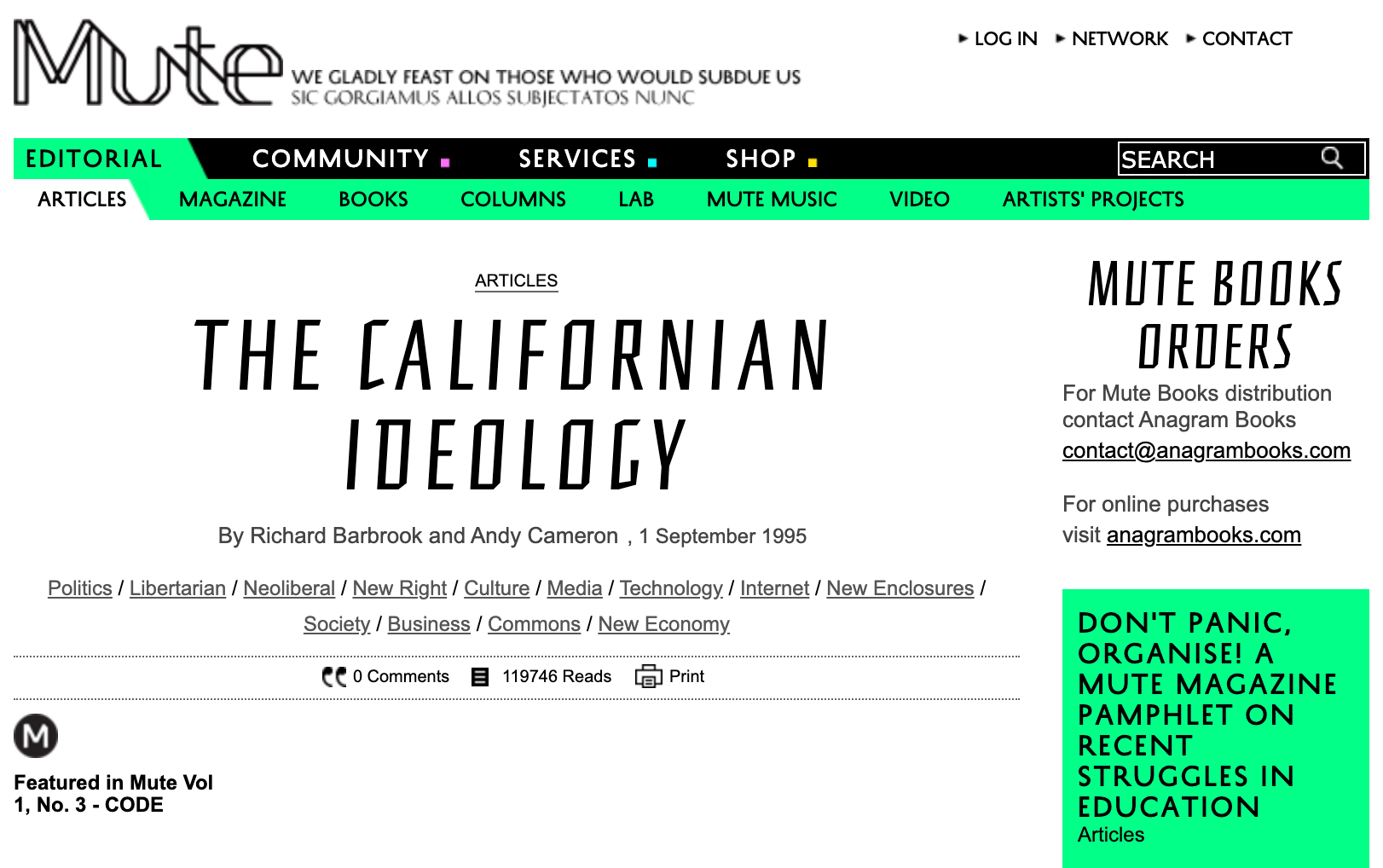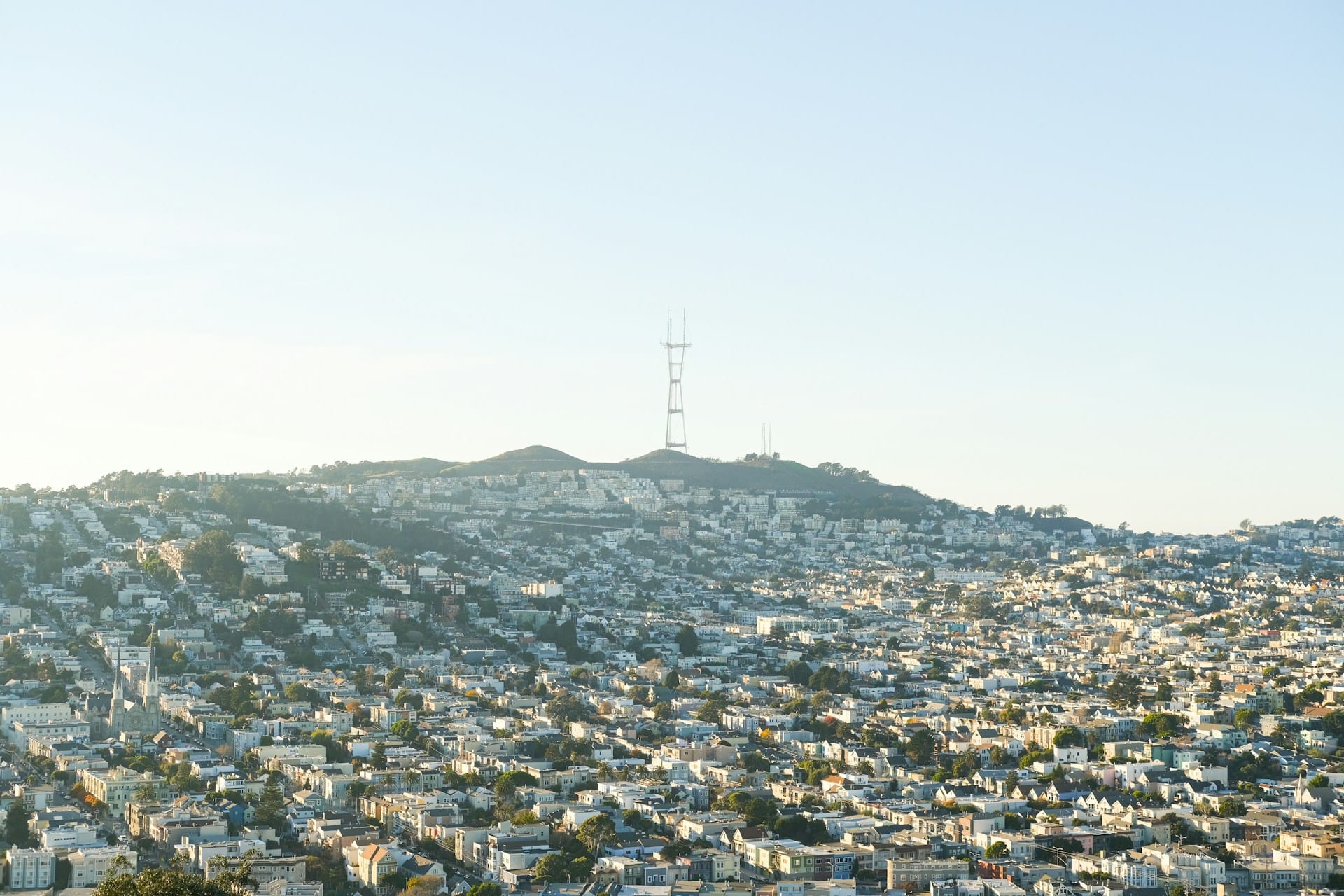Silicon Valley Hates You
The Silicon Valley death drive is the resoundingly anti-human, anti-creative conceit at the root of generative AI development.

And they're only getting better ...
The future's so bright
I gotta wear shades
— Timbuk3, "The Future's So Bright" (1986)
Weeks ago, a friend linked me to an "archival discovery" of a "lost Detroit techno record" by an artist supposedly called "Marcellus Young." The purported album cover depicts a tall Black person, wearing a stylish and contemporary-looking outfit, standing in front of a nondescript suspension bridge—Brooklyn maybe, or Detroit, or Chicago. But actually, none of those places, because there is no such artist: "Marcellus Young" isn't real, and instead is a portmanteau of two genuine Detroit techno legends, Marcellus Pittman and Claude Young. And though the "music" does exist, technically speaking, it is nightmarish AI-generated dreck, utterly soulless, lifeless, and hollow: music to drive nails into your ears to.
In other words, the artist is fake, the music is fake, the history is fake. The whole project is nothing more than digital blackface, enabled by generative AI tools and the frictionless user-generated content moderation policies of modern digital streaming platforms.

Soon after that came a spate of images shared on various social media platforms, obviously generated by AI, stylized in the manner of Hayao Miyazaki's Studio Ghibli films—perhaps the most painstakingly labor-intensive hand-drawn animation in generations. That Miyazaki's oeuvre—really, his life's work and that of his entire studio; work beloved and cherished by untold numbers of people and families the world around—had suddenly been reduced to a glorified Snapchat filter was jarring to witness, but these days, wasn't very surprising.
And then the White House, led by a morally and culturally bankrupt administration, joined in on the trend, sharing a Miyazaki-fied image of a brown woman in tears as she is handcuffed by, one assumes, an ICE agent. Shocking in its abjection, it went viral at once: Mission Accomplished, to borrow the parlance of presidents past.
— Sam Altman defends AI art after Studio Ghibli backlash, calling it a 'net win' for society (Business Insider, 2025)
The genuinely novel horror of the White House's AI-generated image is difficult to capture in words—difficult even to wrap your head around. It's not just that it makes an absolute mockery of a legendary artist whose work promulgates kindness and grace, or that it implicates the viewer in its cruelty theater, inviting us to laugh at its subject, goading us on like a schoolyard bully. Nor even is its explicit racism particularly disturbing: after all, that is a feature, not a bug, as we say here in the Bay Area.
Instead, what the horror of this image represents—and the fake-music slop of "Marcellus Young" too, though these cases are wholly different in degree—is the Silicon Valley death drive: an utmost contempt for the artistic impulse, and ultimately, for humanity itself.
The artistic impulse, at its root, is an attempt to reach across the unbridgeable gulf of individual experience that exists between each of us as human beings. At the zenith of its expression, including but obviously not limited to Miyazaki's films or beloved pieces of music, creative practice allows us to commune with one another beyond language. The reduction of this impulse to at-will text prompts and online gadgetry, whose outputs recycle and remake without consent the work of human artists, symbolizes the fundamentally anti-humanist triumph of technology over creativity.
— This Is How Meta AI Staffers Deemed More Than 7 Million Books to Have No “Economic Value," (Vanity Fair, 2025)
In 1995, British authors Richard Barbrook and Andy Cameron published an essay titled The Californian Ideology in Mute, one of the earliest publications dedicated to digital culture. They detailed "an emerging global orthodoxy concerning the relation between society, technology, and politics … a mix of cybernetics, free market economics, and counter-culture libertarianism." Though the internet was in its infancy when the pair were writing, their essay is astonishingly prescient—it reads like a blueprint for the next 30 years.

With keen foresight, Barbrook and Cameron correctly identified that at the heart of the Californian Ideology lay an inherently right-wing logic of dominance, control, and techno-supremacy, driven by worship of laissez-faire libertarian capitalism. "Individual freedom is no longer to be achieved by rebelling against the system, but through submission to the natural laws of technological progress and the free market," the pair wrote, explicating the ethos of Silicon Valley. "The prophets of the Californian Ideology argue that only the cybernetic flows and chaotic eddies of free markets and global communications will determine the future … As technological determinists, they believe that human social and emotional ties obstruct the efficient evolution of the machine."
Nevertheless, Americans at large bought into the myth of liberation through technology—the result, perhaps, of Silicon Valley's extraordinarily effective marketing campaigns. Think different, Apple exhorted, using artists and thinkers like Bob Dylan, Jim Henson, and Miles Davis as a backdrop. Don't be evil, Google proclaimed, a motto that lasted until the corporation finally abandoned it in the pursuit of unrepentant surveillance capitalism, amassing trillions of dollars of wealth in the process.

Meanwhile, the present-day newsmedia seems befuddled by the supposedly "newfound right-wing turn" that has gripped Silicon Valley. The New York Times wrote in January 2025: "A Euphoric Tech Industry Is Ready to Celebrate Trump and Itself"; in October 2024: "How Tech Billionaires Became the G.O.P.'s New Donor Class"; and in May 2024: "Some of Silicon Valley's Most Prominent Investors Are Turning Against Biden."
But the writing has always been on the wall, as Barbrook and Cameron demonstrated decades ago. The only thing that's changed is how openly vocal Silicon Valley leadership is now willing to be about their bedrock belief in the supremacy of technology over humanity.
— The Story Behind the “Stop Hiring Humans” Billboards in San Francisco (Artisan AI, 2024)
Venture capitalist-investor Marc Andreessen, one of Silicon Valley's most powerful players and influential thinkers, recently published a 5,000-word screed titled The Techno-Optimist Manifesto. Composed primarily of short, declarative sentences separated by line breaks, like the longest LinkedIn post you've ever read, it feels at first like a twenty-something software developer typing "Who is John Galt?" over and over, Jack Torrance-style, until you realize that it is, in fact, a dead-serious glimpse into what the uppermost echelon of Silicon Valley actually believes.
We believe technological change, far from reducing the need for human work, increases it … and [that] job growth can continue forever. ...
We believe any deceleration of AI will cost lives. Deaths that were preventable by the AI that was prevented from existing is a form of murder.
— The Techno-Optimist Manifesto (Andreessen-Horowitz, 2023)
And that's just the tip of the iceberg. Throw a stone here in the Bay Area and you'll find an extremely rich techie who believes, with all sincerity, that their wealth grants them the right to reshape society in their image—for the betterment of all.
Take the cadre of billionaires, including the aforementioned Marc Andreessen, LinkedIn co-founder Reid Hoffman, and venture capitalist Michael Moritz, who spent over five years and at least $800 million buying thousands of acres of Bay Area land in an attempt to build their own techie city—which failed after locals organized to resist the project. Or Balaji Srinivasan, an Andreessen protege, who goes further, promoting what he calls "The Network State": “What I’m really calling for is something like tech Zionism,” he said in an interview, explaining what The New Republic called "his shocking ideas for a tech-governed city where citizens loyal to tech companies would form a new political tribe clad in gray t-shirts." If that seems fantastical, consider the world's richest man-child, Elon Musk—no longer Bay Area-based, despite receiving over $3 billion in business subsidies from the state of California—whose meme-based pseudo-governmental initiative DOGE is gutting the U.S. federal government as if it were a social network he purchased for $44 billion.
But I digress. Despite the total revulsion that both "Marcellus Young" and the Miyazaki disgrace elicits within me, generative AI is here to stay, and its capabilities are improving faster than I ever imagined possible. Perhaps, as Sam Altman and his fellow AI evangelists insist, the unbridled anti-humanity of these examples I cite, alongside so many others, are mere bumps on the road toward an event horizon of infinite creative possibility—collateral damage in pursuit of artistic immanence.
— Billionaires flush with 'new money' are flocking to the Bay Area (SF Gate, 2025)
16 years ago, Mark Fisher defined "capitalist realism" as "the widespread sense that not only is capitalism the only viable political and economic system, but also that it is impossible even to imagine a coherent alternative to it." Today, it seems impossible to imagine any alternative to Silicon Valley's bromides of free-market technological progress as human destiny: God is a software developer, and generative AI is made in His image. All that exists is training data. The ends will justify the means. Eventually.
We must resist the narrative of inevitability. Market logic is not the sole determinant of our possible futures. Technology must serve the needs of humanity, not vice-versa.
AI isn't just another tool—it will redefine how our world works.
Why memorize facts, write code, research anything—when a model can do it in seconds?
The best communicator, the best analyst, the best problem-solver—is now the one who knows how to ask the right question.
The future won't reward effort. It'll reward leverage.
So, start cheating. Because when everyone does, no one is.
— Cluely Manifesto (2025)
Earlier this year, at the AI Action Summit in Paris, France, Dr. Alondra Nelson, former acting director of the White House's Office of Science and Technology Policy, gave a speech to an audience of heads of state and blue-chip executives. She said:
"The purpose of AI is not scale or efficiency. The purpose of AI is people. …
It is not inevitable that AI will lead to great public health benefits. The outcomes many of us hope for, or anticipate, are not inherent features of the technology itself. They are not coded into algorithms, or embedded in neural networks. …
We have the tools to guide AI to work for all of our people. … We can ensure AI systems enhance rather than diminish human rights and dignity. We can create systems that expand opportunity rather than concentrate power. We can build technology that strengthens democracy rather than undermines it."
Is anyone listening?

